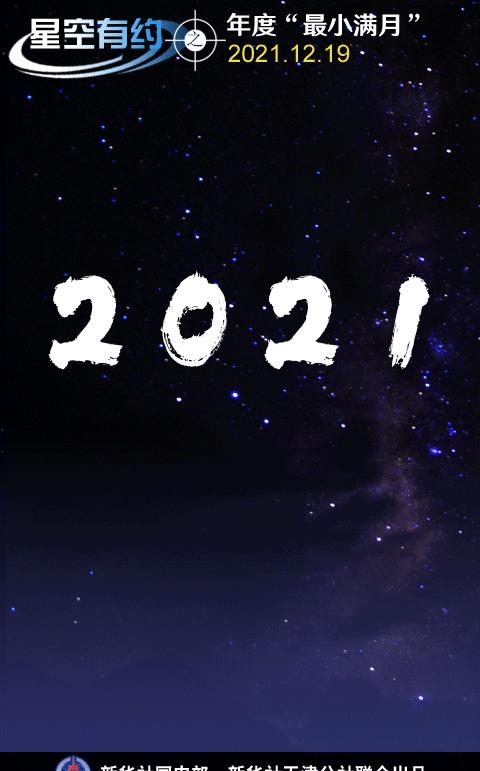
Poster Maker: Feng Juan
On December 19, the sixteenth day of the 11th month of the lunar calendar, a full moon will appear in the night sky, which is the last full moon in 2021 and the "smallest" of the many full moons of the year. At that time, as long as the weather is good, the public everywhere will see the beauty of "a full moon when the sky is illuminated".
The moon is a sphere, but why is there a lack of circles? "This is because the moon itself does not emit light, but only reflects the sunlight. Half bright and half dark, with 'sunny side' and 'shaded side'. When the 'sunny side' is completely facing the earth, we see the 'full moon (i.e., full moon)', otherwise we see the 'moon deficiency'. Xiu Lipeng, director of the Tianjin Astronomical Society and an expert in astronomical science popularization, said.
What exactly is the "minimum full moon"? Author: Astronomical popular science comic blogger EasyNight (EN fungus)
Why is the full moon big and small? Xiu Lipeng explained that the moon revolves around the earth similar to the situation where the earth rotates around the sun, but the elliptical orbit of the moon around the earth is a little flatter than the elliptical orbit of the earth around the sun, plus the moon is relatively close to the earth, so the moon looks a little larger when it is near the perigee than near the apogee.
When the time of the full moon occurs closest to the time of the moon at the apogee in a year, it is the annual "minimum full moon"; when the time of the full moon occurs closest to the time when the moon is located at the perigee, it is the annual "maximum full moon", which is commonly known as the "super moon".
In fact, from an astronomical point of view, it is more accurate to call it "apogee full moon" and "perigee full moon".
Zhang Yiyang, a member of the Stardust Astronomy Club of Nankai Middle School in Tianjin, photographed the comparison chart of the "largest full moon" and "minimum full moon" in 2020. (Courtesy of me)
How much difference can the size of the apogee full moon and the perigee full moon be? According to Xiu Lipeng, the average distance between the moon and the earth is about 384,000 kilometers, the nearest is about 356,000 kilometers, and the farthest is about 406,000 kilometers. It can be calculated that the apparent diameter of the moon at perigee is about 14% larger and the area is about 30% larger than at apogee, and in the absence of a reference, this difference in size is difficult to distinguish with the naked eye alone.
According to astronomical forecasts, at 10 o'clock on December 18, the moon traveled to the apogee, when the moon had the smallest apparent diameter; at 12:36 on December 19, it was the full moon moment, at which time, the moon appeared "the most round".
Guangdong province astrophotography enthusiast Yuan Fengfang filmed the 2019 "maximum full moon" and "minimum full moon". (Courtesy of me)
On May 26 this year, the fifteenth day of the fourth month of the lunar calendar, the full moon that night is the "largest full moon" in 2021, and it coincides with the total lunar eclipse, so it is also known as the "super red moon" and "super moon total eclipse".
"If you had photographed this particular moon at that time, this time you can use the same equipment and the same focal parameters to shoot it again when the moon is at the same horizon coordinate position. Xiu Lipeng said.
Source: Xinhua Viewpoint